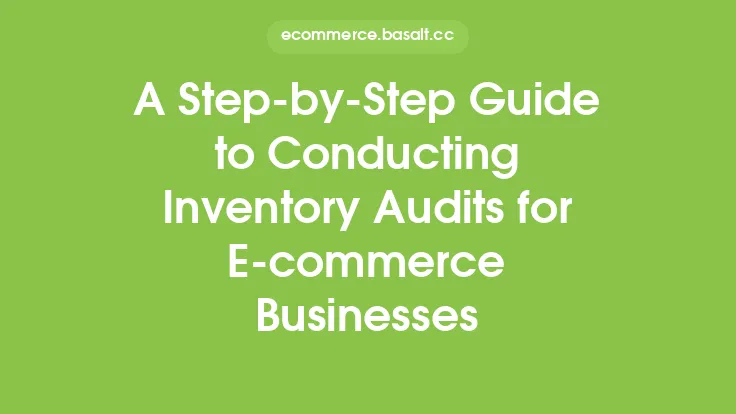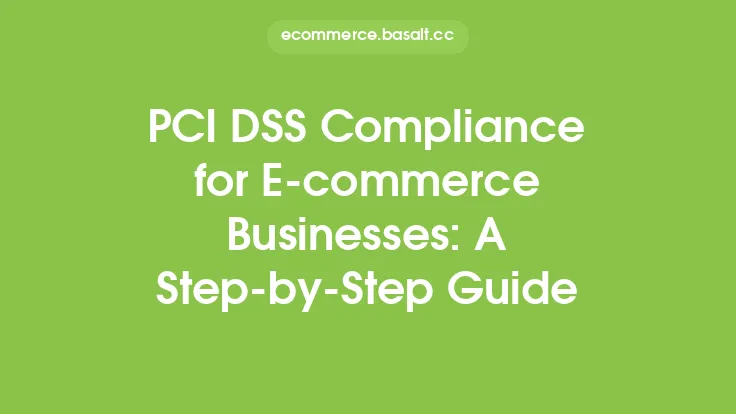As an e-commerce business owner, you're constantly looking for ways to improve your website's performance and increase conversions. One of the most effective methods to achieve this is through A/B testing, also known as split testing. A/B testing involves comparing two or more versions of a web page, email, or application to determine which one performs better. In this article, we'll delve into the world of A/B testing for e-commerce businesses, exploring its benefits, types, and best practices to help you optimize your online store for maximum conversions.
What is A/B Testing?
A/B testing is a scientific approach to understanding how users interact with your website or application. It involves creating multiple versions of a page or element, such as a product page, checkout process, or call-to-action (CTA) button, and randomly assigning users to each version. The goal is to identify which version performs better in terms of conversion rates, click-through rates, or other key performance indicators (KPIs). By analyzing the results, you can make data-driven decisions to improve your website's user experience, increase conversions, and ultimately drive more sales.
Benefits of A/B Testing for E-commerce Businesses
A/B testing offers numerous benefits for e-commerce businesses, including:
- Improved conversion rates: By identifying and optimizing elements that resonate with your target audience, you can increase conversions and drive more sales.
- Enhanced user experience: A/B testing helps you understand how users interact with your website, allowing you to make data-driven decisions to improve the overall user experience.
- Increased revenue: By optimizing your website's elements, you can increase average order value, reduce cart abandonment rates, and drive more revenue.
- Reduced risk: A/B testing allows you to test new ideas and designs without affecting your entire website, reducing the risk of implementing changes that may not resonate with your audience.
- Data-driven decision making: A/B testing provides you with actionable insights, enabling you to make informed decisions about your website's design, layout, and content.
Types of A/B Testing
There are several types of A/B testing, including:
- Simple A/B testing: This involves testing two versions of a page or element, such as a product page with a red CTA button versus a product page with a green CTA button.
- Multivariate testing: This involves testing multiple elements simultaneously, such as testing different combinations of headlines, images, and CTAs.
- Split URL testing: This involves testing two different versions of a page, such as a product page with a different layout or design.
- User testing: This involves testing how users interact with your website, such as through usability testing or user feedback sessions.
Best Practices for A/B Testing
To get the most out of A/B testing, follow these best practices:
- Start with a clear hypothesis: Before running an A/B test, define a clear hypothesis about what you're trying to achieve and what you expect to happen.
- Test one element at a time: To ensure accurate results, test one element at a time, such as a CTA button or headline.
- Use a sufficient sample size: Ensure that your test includes a sufficient sample size to produce reliable results.
- Run tests for a sufficient duration: Run tests for a sufficient duration to capture a representative sample of users and to account for external factors, such as seasonal fluctuations.
- Analyze and act on results: Analyze the results of your A/B test and act on the insights, making data-driven decisions to improve your website's performance.
Common A/B Testing Mistakes to Avoid
When running A/B tests, avoid the following common mistakes:
- Testing too many elements at once: This can lead to inconclusive results and make it difficult to determine which element is responsible for the outcome.
- Not running tests for a sufficient duration: This can lead to inaccurate results and a lack of representative data.
- Not using a sufficient sample size: This can lead to unreliable results and a lack of confidence in the outcome.
- Not analyzing and acting on results: This can lead to a lack of improvement and a failure to capitalize on the insights gained from the test.
Tools and Resources for A/B Testing
There are numerous tools and resources available to help you run A/B tests, including:
- Google Optimize: A free A/B testing and personalization platform that integrates with Google Analytics.
- VWO: A comprehensive A/B testing and conversion optimization platform that offers a range of features and tools.
- Optimizely: A popular A/B testing and personalization platform that offers a range of features and tools, including multivariate testing and user testing.
- Unbounce: A landing page and conversion optimization platform that offers A/B testing and personalization features.
Conclusion
A/B testing is a powerful tool for e-commerce businesses, offering a scientific approach to understanding how users interact with your website and identifying opportunities for improvement. By following best practices, avoiding common mistakes, and using the right tools and resources, you can unlock the full potential of A/B testing and drive more conversions, sales, and revenue for your online store. Remember to always start with a clear hypothesis, test one element at a time, and analyze and act on the results to ensure that your A/B testing efforts are effective and impactful.





